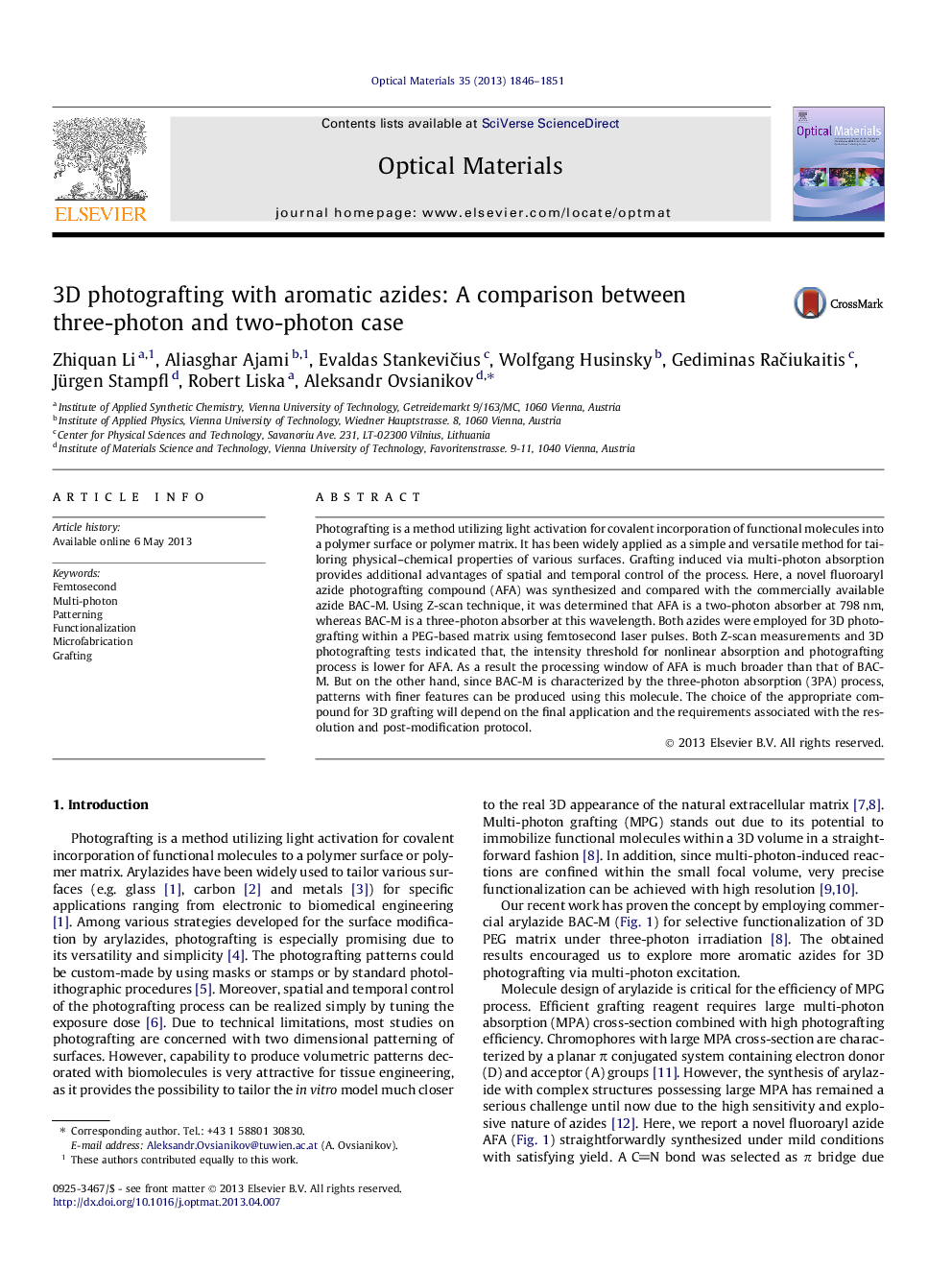| Article ID | Journal | Published Year | Pages | File Type |
|---|---|---|---|---|
| 1495194 | Optical Materials | 2013 | 6 Pages |
•Space-resolved 3D functionalization of hydrogels by means of femtosecond laser induced photochemistry is demonstrated.•A novel fluoroaryl azide photografting compound (AFA) was synthesized and compared with the commercially available BAC-M.•Both azides were employed for 3D photografting within a PEG-based matrix using femtosecond laser pulses at 793 nm.•Photografting performance of these two-photon-active (2PA) AFA and three-photon-active (3PA) BAC-M compounds is compared.•Due to 3PA interaction BAC-M yields a better spatial resolution, while AFA is shown to supports a larger processing window.
Photografting is a method utilizing light activation for covalent incorporation of functional molecules into a polymer surface or polymer matrix. It has been widely applied as a simple and versatile method for tailoring physical–chemical properties of various surfaces. Grafting induced via multi-photon absorption provides additional advantages of spatial and temporal control of the process. Here, a novel fluoroaryl azide photografting compound (AFA) was synthesized and compared with the commercially available azide BAC-M. Using Z-scan technique, it was determined that AFA is a two-photon absorber at 798 nm, whereas BAC-M is a three-photon absorber at this wavelength. Both azides were employed for 3D photografting within a PEG-based matrix using femtosecond laser pulses. Both Z-scan measurements and 3D photografting tests indicated that, the intensity threshold for nonlinear absorption and photografting process is lower for AFA. As a result the processing window of AFA is much broader than that of BAC-M. But on the other hand, since BAC-M is characterized by the three-photon absorption (3PA) process, patterns with finer features can be produced using this molecule. The choice of the appropriate compound for 3D grafting will depend on the final application and the requirements associated with the resolution and post-modification protocol.
